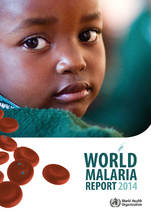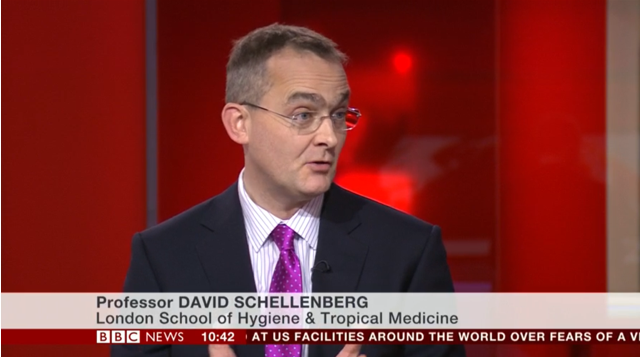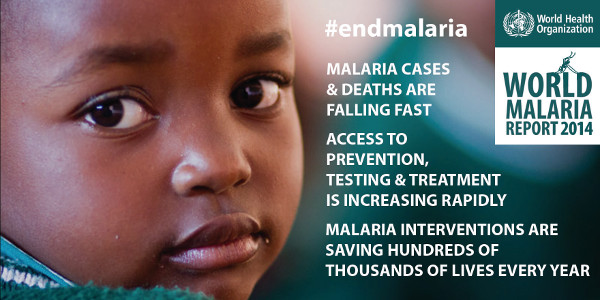Effective malaria control dramatically reduces deaths
9 December 2014

The number of people dying from malaria has fallen dramatically since 2000 and malaria cases are also steadily declining, according to the World Malaria Report 2014. Experts highlight the importance of increasing access to diagnosis and treatment, and to target resources where they are most needed.
Between 2000 and 2013, the malaria mortality rate decreased by 47% worldwide and by 54% in the WHO African Region - where about 90% of malaria deaths occur.
New analysis across sub-Saharan Africa reveals that despite a 43% population increase, fewer people are infected or carry asymptomatic malaria infections every year: the number of people infected fell from 173 million in 2000 to 128 million in 2013.
“We can win the fight against malaria,” says Dr Margaret Chan, Director-General, WHO. “We have the right tools and our defences are working. But we still need to get those tools to a lot more people if we are to make these gains sustainable.”
Professor David Schellenberg, director of the ACT Consortium, also said: "The dramatic gains from the increased use of currently available malaria control tools are clearly shown in this year's important report. We're clearly going in the right direction, and can expect further enormous returns on continued investment in malaria prevention, diagnosis and treatment."

Prof David Shellenberg talks to the BBC about the World Malaria Report 2014
Malaria diagnosis, treatment and prevention are key to sustain progress
Access to accurate malaria diagnostic testing and effective treatment has significantly improved worldwide. In 2013, the number of rapid diagnostic tests (RDTs) procured globally increased to 319 million, up from 46 million in 2008.
Meanwhile, in 2013, 392 million courses of artemisinin-based combination therapies (ACTs), a key intervention to treat malaria, were procured, up from 11 million in 2005.
"Rapid Diagnostic Tests (RDTs) take the guess work out of malaria diagnosis," explains Prof Schellenberg. "The ACT Consortium has been working since 2007 to understand the best ways to deploy RDTs in health facilities, in the private retail sector - where many malaria treatments are sourced - and at the community level."
He added: "The marked increase in the availability and use of RDTs means we are now better placed than ever before to diagnose and treat malaria cases, and to count cases with confidence. We can now target our malaria control efforts where they are most needed and track progress with malaria control more reliably."
Moving towards elimination
Globally, an increasing number of countries are moving towards malaria elimination, and many regional groups are setting ambitious elimination targets, the most recent being a declaration at the East Asia Summit to eliminate malaria from the Asia-Pacific by 2030.
In 2013, two countries reported zero indigenous cases for the first time (Azerbaijan and Sri Lanka), and 11 countries succeeded in maintaining zero cases (Argentina, Armenia, Egypt, Georgia, Iraq, Kyrgyzstan, Morocco, Oman, Paraguay. Uzbekistan and Turkmenistan). Another four countries reported fewer than 10 local cases annually (Algeria, Cabo Verde, Costa Rica and El Salvador).
Fragile gains and challenges ahead
But significant challenges remain: “The next few years are going to be critical to show that we can maintain momentum and build on the gains,” notes Dr Pedro L Alonso, Director of WHO’s Global Malaria Programme.
In 2013, one third of households in areas with malaria transmission in sub-Saharan Africa did not have a single insecticide treated net. Indoor residual spraying, another key vector control intervention, has decreased in recent years, and insecticide resistance has been reported in 49 countries around the world.

Even though diagnostic testing and treatment have been strengthened, millions of people continue to lack access to these interventions. Progress has also been slow in scaling up preventive therapies for pregnant women, and in adopting recommended preventive therapies for children under five years of age and infants.
In addition, resistance to artemisinin has been detected in five countries of the Greater Mekong subregion and insufficient data on malaria transmission continues to hamper efforts to reduce the disease burden.
Dr Alonso believes, however, that with sufficient funding and commitment huge strides forward can still be made. “There are biological and technical challenges, but we are working with partners to be proactive in developing the right responses to these. There is a strong pipeline of innovative new products that will soon transform malaria control and elimination. We can go a lot further,” he says.
While funding to combat malaria has increased threefold since 2005, it is still only around half of the USD 5.1 billion that is needed if global targets are to be achieved.
Further information

